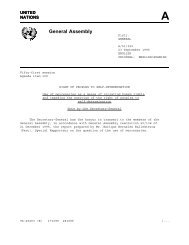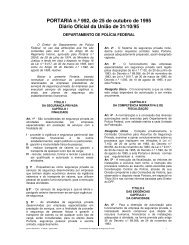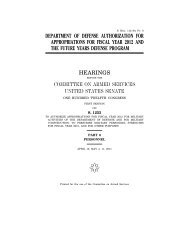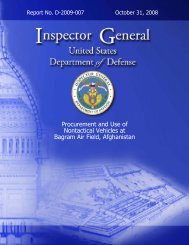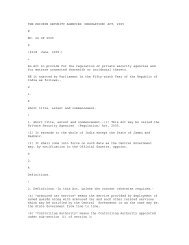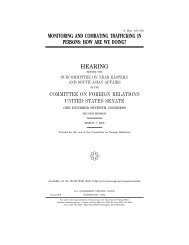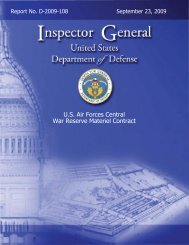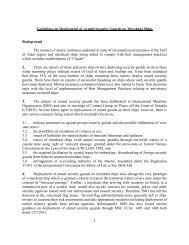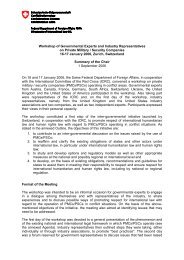Security Assistance; and Logistics - Federation of American Scientists
Security Assistance; and Logistics - Federation of American Scientists
Security Assistance; and Logistics - Federation of American Scientists
Create successful ePaper yourself
Turn your PDF publications into a flip-book with our unique Google optimized e-Paper software.
Observation 13. Availability <strong>of</strong> Electricity at LocationComm<strong>and</strong>sBoth the Taji National Depot <strong>and</strong> KMTB averaged only 4-5 hours <strong>of</strong> electrical serviceper day. The lack <strong>of</strong> power generation negatively affected many critical IA functions.The Iraqi side <strong>of</strong> Taji Base relied on over 300 diesel powered generators locatedthroughout the base to produce its total output <strong>of</strong> electrical power. KMTB also useddiesel generators to provide the total capacity <strong>of</strong> electrical power for the base. Neitherbase was connected to the national electrical grid. Electrical power generation for bothbases was restricted by the lack <strong>of</strong> fuel for the generators.Because insufficient quantities <strong>of</strong> diesel fuel were allocated to operate the dieselgenerators, the installations were unable to produce the required electrical capacity toproperly support the Iraqi Army tenant units on base. The lack <strong>of</strong> electrical capacityadversely affected 3 rd <strong>and</strong> 4 th line vehicle maintenance repair, equipment repair <strong>and</strong>maintenance facilities, supply warehouses, training facilities, mortuary <strong>and</strong> healthservices, <strong>and</strong> Iraqi Army divisional headquarters. Additionally, the loss <strong>of</strong> electricalpower precluded the uninterrupted use <strong>of</strong> key information technology resources such ascomputer hardware/s<strong>of</strong>tware for parts requisition <strong>and</strong> tracking.Applicable CriteriaDoD Directive 3000.05. DoDD 3000.05, “Military Support for Stability, <strong>Security</strong>,Transition, <strong>and</strong> Reconstruction (SSTR) Operations,” November 28, 2005, providesguidance on stability operations that will evolve over time as joint operating concepts,mission sets, <strong>and</strong> lessons learned develop. It establishes DoD policy <strong>and</strong> assignsresponsibilities within the DoD for planning, training, <strong>and</strong> preparing to conduct <strong>and</strong>support stability operations.Availability <strong>of</strong> Continuous Electrical PowerAt both Taji Base <strong>and</strong> KMTB, the Location Comm<strong>and</strong> comm<strong>and</strong>ers complained abouttheir inability to provide sufficient electrical capacity for their tenant units <strong>and</strong> for theirbase general support requirements. At the time <strong>of</strong> our visit, we were informed thatelectrical power at each base was available for only 4-5 hours per day. The lack <strong>of</strong>electricity was not limited to these sites. The assessment team heard the constant themethat electrical production was insufficient at various sites supporting the ISF. Theshortfall was evident from the battalion up to the national depot level.The Taji Location Comm<strong>and</strong> supported over 31 tenant units that included such elementsas the Iraqi Army Support <strong>and</strong> Service Institute, the Taji National Maintenance Depot,the Taji National Supply Depot, the tracked maintenance facility, the Taji TrainingCenter, the Engineering Schools, <strong>and</strong> two Iraqi Army divisions. The KMTB LocationComm<strong>and</strong> supported a similar assortment <strong>of</strong> Iraqi Army units <strong>and</strong> facilities. Both Taji93





